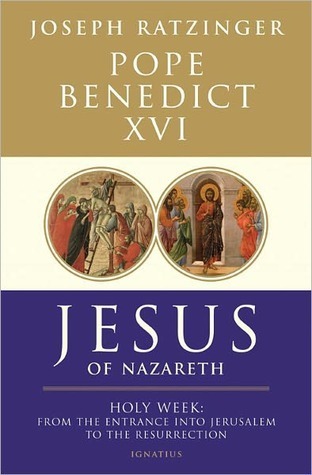What do you think?
Rate this book


381 pages, Kindle Edition
First published August 10, 2011
The conclusion surprises us. Luke says that the disciples were full of joy at the Lord’s definitive departure. We would have expected them to be left perplexed and sad. The world was unchanged, and Jesus had gone definitively. They had received a commission that seemed impossible to carry out and lay well beyond their powers…And yet it is written that they returned to Jerusalem with great joy, blessing God. How are we to understand this? In any case, it follows that the disciples do not feel abandoned. They do not consider Jesus to have disappeared far away into an inaccessible heaven. They are obviously convinced of a new presence of Jesus…they know that he is now permanently among them, in the way that only God can be close to us.